This is turning from an event to a tradition: the day on which Scotland’s Ducatista come out to play at The Green Welly Stop – the highland’s answer to Surrey’s Box Hill. On offer are test rides on the latest and (hopefully) greatest toys from Bologna. This year, they’ve wisely moved from the infeasible optimism of mid-April to early May, thereby much reducing the likelihood of needing snowploughs. And it’s worked: today’s weather was warm, sunny and bike-friendly, especially on the chosen test route: 24 miles of the A85 from Tyndrum to Dalmally, one of the world’s finest motorcycling roads. There is some interesting new stuff this year: as well as the usual and unedifying sight of portly blokes of a certain age contorting creaking joints onto the Panigale, we had the amusement of watching sports and adventure bike riders (self included) wobbling down the road whilst frantically waving their feet in search of the xDiavel’s foot pegs. Yes, Ducati has brought their new ‘Cruiser’ along, which could be considered a brave move on these roads. But you’ll notice the quotes around the C-word there – that just may be a clue that categories may not be a reliable guide to reality.I rocked up nice and early, which got me straight out on the first rides. By the time I’d completed my mission of riding four bikes and ambled off in search of coffee and bacon butties, the Green Welly was packed with bikes, bods and Plods, the police presence bringing Terminator 2 to mind (“The police are here.”, “How many?”, “All of them…”). The surrounding roads were also full of hurtling machinery with the idiocy dial turned up to 11, that (and the bacon butties) going a long way towards justifying the presence of the Feds: Bears and buns.
My interest was in giving the new Monster R a workout (because I could), comparing the Multistrada DVT and its new Enduro cousin (because I might just buy one) and having a hack on the xDiavel (because it’s different). Not that I’d buy a bike with that riding position, but the xDiavel does look absolutely stunning and well worth a play. Ducati advertises this model with the cringeworthy tag-line of “The gentleman, the bastard”. I assume this to be a reference to combining laid-back style with the potential for caddish behaviour, so I was half expecting a moustache-twirling Terry Thomas lookalike to be our host for the day. That didn’t happen, but why does Ducati appear to assume that women are only relevant as pillion ornaments? That does annoy me – I thought we’d got over that sort of shit by the early 80s. Although the difference between Ducati’s marketing image and Scottish biking reality is hilarious. Milan may be closer.
Monster R
For a pre-caffeinated 9:15am start, I thought I’d start simple: by current standards, the Monster R is old-school and, as it turns out, rather the better for it. It’s got the original (non-DVT) 11° Testastretta engine that’s in my Multistrada, but with the wick turned up by another 10bhp. It turns out to be the eager puppy of the bunch, compact and highly responsive, albeit feeling strangely lumpy at revs where my bike is entirely happy – it does need to be above 4,000 rpm to pull smoothly. The riding position is excellent with less of a stretch to the bars than I remember from Monsters of yore. And that tiny little fairing over the instruments proves surprisingly effective at deflecting wind blast, at least at semi-sane road speeds. Ducati has also changed the pillion footrest hangers and the exhaust, thereby preventing the exhaust from kicking out the right foot, which is an issue on the lesser Monsters. As ever, the Öhlins suspension is a class act, keeping me well in touch with what’s happening ‘neath the wheels whilst coping well with post-winter potholes and frost heave. It turns, it goes very well and is great fun. A very nice bike and, with a full exhaust system, a matching remap and slightly lowered gearing, it would be spectacular.
From this point on though, the day becomes a tale of parts. In fact, it becomes a tale of parts of several machines which, if combined, could create something rather special.
Multistrada Enduro
Ooh, now this is taller. Definitely taller, and I mount with that undignified hop-lurch required to drag foot over the pillion seat (and I’m 6’ in old money, with a 34” inside leg). I am informed that the approved mounting tactic is via a left foot placed on the nearside rider’s footpeg. Which is fine until the sidestand breaks: this happened to a somewhat vertically-challenged friend of mine once as he mounted his fully be-luggaged 998S. The resulting crunched carbon fibre was neither pretty nor cheap. Let’s hope they’re made of tougher stuff now.
First things first, then: this is a very comfortable and unconditionally stable (despite my best efforts) machine. It feels not just higher but a much bigger machine than its non-Enduro stablemate. I put that down to a combination of the longer wheelbase and the usefully larger (30l) fuel tank. On the move though, it proves well-balanced and the extra weight is not apparent – as this was early in the day, this one was fairly full of fuel and it handled the weight very well indeed.
It’s a very calm machine to ride, with the exception of the standard screen, which doesn’t work for me – however I adjusted it (one handed, so doable on the move), it was noisy and buffeted the head and shoulders considerably. Otherwise, it got on with the job at hand with a serene posture and quiet efficiency. “More GS than a GS” was my first thought. It’s geared three teeth lower than the standard Multistrada DVT, so I was looking forward to a machine that behaved with urgency and enthusiasm. But was disappointed: it has that same strange mid-range hole that the standard model has and I suspect that the Enduro-specific full Termignoni exhaust they’re offering will be needed to make the thing work properly. What was strange was that, playing with the riding modes en route, I found that the 100bhp Urban & Enduro engine maps felt more usable, in that the mid-range felt stronger, albeit that – naturally – they ran out of puff quite quickly at the top end.
The Skyhook suspension is superb, albeit without the connection of the Öhlins, but more comfortable. I didn’t get the opportunity to try fine-tuning the various suspension modes, but Sport mode + luggage setting seemed to suit the roads and speeds we were using.
The seat and riding position were both excellent and noticeably more upright than the stock DVT: bar risers seem to be higher and there seems to be more of an upsweep on the bars themselves. I’m not sure how that would play over time with my dodgy lower back, for which a slightly more forward-reaching position gives a better balance. I did though catch my Goretex trousers a couple of times on the plastic frame cover and adjacent frame plug, neither of which sits quite flush to the frame. That could get expensive.
A real mile-muncher, then: it did not feel like an off-road bike being asked to play nicely on the road: it just felt like a big, well set up, long-distance tourer that, once in its groove, would simply devour the miles, kilometres or parsecs – whatever you asked of it. For me though the 1200 DVT engine is still a stumbling block and I wouldn’t consider owning one without trying one that had the full Termignoni exhaust fitted. Even then, I’d probably pass on the Enduro: my personal balance lies with a rather sportier, fast-turning feel.
Multistrada DVT
This is the same machine I rode from Ducati Glasgow a few months ago. This time, it felt better and, after the Enduro, quite titchy. Also, not slow at all, but you had to work it more consciously to make, ah, progress. I did amuse myself by tailing the poorly-ridden Panigale in front with the Multi in Enduro mode (100bhp and soft suspension) and it still did very well. For some reason, perhaps by virtue of being more run in, the Touring and Sport engine maps felt more usable on this machine than on the Enduro, despite the higher gearing (a 40 vs 43 tooth rear sprocket). But there remains that missing throttle response and the damn great torque hole below about 5000rpm. Even above that, the DVT feels a little strained in comparison with the original 1200 Multistrada, rather as if it’s conscious of its shortcomings and trying a little too hard to make up for it. If I were to own one of these, I’d want to see it geared down, have a better engine map and a faster throttle action. As with the Enduro, I gather that fitting the optional full Termignoni exhaust addresses much of that, but I do have an inbuilt objection to paying another £1800 atop the not inconsiderable cost of a DVT, just to make the damn thing work properly.
This machine still had the lower seat height set and I have to say that the fit around and under the rider’s seat is an embarrassing mess. Handling though is absolutely excellent – at least as good and possibly more neutral than mine – the earlier 1200 Multis are highly tyre and pressure sensitive and can understeer when the mood takes them. Here though, on the stock Pirelli Scorpions, the DVT felt extremely confidence-inspiring. Suspension was, as with any Skyhook machine I’ve ridden, simply superb, albeit with my usual Öhlins comparative observations applying. The colour display was legible even in the day’s atypical sunshine and certainly far better in layout than that of the MV. I ignored all the built-in Bluetooth Bollocks(TM). The windscreen was not better than that of the Enduro, and far, far worse than the MRA Vario-Touring on my own machine. The DVT was the bike I’d come closest to buying, but I fear that I just couldn’t take the backward step in the engine characteristics.
xDiavel S
Whut?! Surely not. I’m not a ‘Cruiser’ type of rider, whatever that means. I’ve ridden the nearest Harley equivalent – the V-Rod – in the past and had been very substantially underwhelmed – when I handed it back, it was with some relief and in need of replacement footrests. So I approached the stunning-looking xDiavel (the S model) with, if not Fear and Loathing, at least a degree of trepidation. Having flailed my way out of the car park with feet in search of real estate, I got myself into position just in time for the first left-hander towards Oban.
The usual cruiser fear when it comes to turning in is: will it or won’t it, especially with a 240-section rear tyre? So I made an act of faith and gave it a good shove of countersteer to get it turning. Ooh. No understeer. Stonking. Stunning. Hilarious. This bike does not handle well for a cruiser. It handles brilliantly, full stop. It has ground clearance. It is even pleasantly neutral-handling – I was expecting that ginormous rear tyre to give the thing the steering characteristics of the Exxon Valdez. Not a bit of it. I don’t know how Ducati’s chassis designers managed that, but they’ve earned their Spag Bol with this one. I was running with a couple of Panigales and the Monster R in manner spirited and was having absolutely no trouble keeping up, and with plenty in hand. There is something amusingly surreal about comfortably travelling at sports bike speeds on a hipster’s armchair.
For some reason though, they haven’t fitted Skyhook to the xDiavel and the ride, although perfectly decent, is a bit harsh over broken surfaces (ie Scotland) and was not in the same bump-smothering class as either Multistrada or Monster R. The engine – a 1262cc update of the Multistrada’s DVT lump – was in a different league: it felt relaxed but torquey, with as near an instant throttle response as I’ve felt from a Euro 4-compliant machine (which is to say, just about OK). It’s fairly smooth, with no high frequency vibes. It is however just a tad lumpy – you definitely feel two 630cc pistons hammering up and down, in a way that reminded me of an old Panther ‘sloper’. Wind protection is no more than tolerable and, were I to own one, I’d be looking for a decent nose fairing/fly screen.
The riding position, although not in quite as stretched out as Harley’s I’ve tried, is excruciating, forcing all your weight onto the base of your spine and not offering any way to alternate by loading legs or arms: by the time I got back to The Green Welly, my back was complaining loudly. [Update: three weeks later, I’m still feeling it]. With more forward bars and much further rearward footrests though, this could be quite something. Pie in the sky? No: such a kit is, apparently, on the way. I am informed that it won’t be cheap, as it will require a new seat and assorted other bits. That might just be worth waiting for. As it stands, the xDiavel is simply a hilariously quick, well-handling motorcycle that happens to have a huge rear tyre and be visually stunning, but whose riding position prevents it from being ridden for any distance in a manner that makes it come alive. Perhaps that’s why Ducati also advertise it for “Low Speed Excitement” – to avoid chiropractors’ bills. As for passengers, I am deeply unconvinced: the stock pillion seat would almost accommodate an anorectic hamster. Almost. The xDiavel apparently also ships with a larger pillion pad that also provides a low-slung buttock restraint (as fitted to the demonstrator), in an attempt to stop your size 6 supermodel passenger dropping messily into the back wheel.
Sum of Parts
In isolation, these are each excellent machines. In comparison though, they suffer: none had the level of responsiveness or immediacy of power delivery of my now-venerable 2010 Multistrada. The Multistradae in particular had slack throttle responses and unedifying holes in their respective mid-ranges. All except the xDiavel felt heavily over-geared, which, in this case, is just as well: as re-gearing a belt-driven machine is non-trivial. It didn’t feel low-geared, just that the extra ccs seemed to have filled in the missing torque – the engine felt closer to, but not as responsive as, mine.
Their problems seem to lie with production engineering and in their market positioning for the Multistrada. On the engineering side, it looks as though they really haven’t cracked the issues around Euro 4 compliance, their current generation engines displaying markedly slack throttle response (possibly from aggressively lean engine maps) and a mid-range hole in delivery that’s a major backward step relative to their previous generation of machines. That also comes with a degree of over-gearing that exacerbates the problem. After the test rides, I rode my ’10 1200S along the same route and the difference in throttle and engine response was startling: despite the notional 10bhp advantage of the DVT machines, they simply wouldn’t know where a 2010-12 era Multistrada had gone.
Although I’m laying much of the blame at Euro 4 and Ducati’s (in)ability to meet it, I also think that the Audification of Ducati, especially of the Multistrada, has a lot to answer for: they seem to be trying to widen the appeal of the Multi to the point where, in neutering much of the inherent character of a v-twin, they’ve created an engine that is neither fish nor fowl. Having now ridden multiple machines with DVT, I’m tempted to call “Emperor’s New Clothes!” on it: I don’t actually think the DVT does their machines any favours, my view being that this is emphatically a less responsive, coherent and characterful engine than the earlier generation of 11° Testastretta. The supersized version in the xDiavel is a massive improvement relative to the Multistradas but it still doesn’t take it back to the pre-DVT, pre-Euro4 abilities of the smaller, simpler engines.
The best bike I rode today however doesn’t exist: give me the Multistrada 1200 with either the xDiavel or the Monster R engine and I’d be a much happier bunny. Possibly even enough to swap my old lamp for a shiny new one. Alternatively, if the xDiavel had properly central footrests, it could be a real contender. And I never thought I’d be saying that about a Cruiser. Finish on the machines looked OK but only time will tell with that and there are sufficient disgruntled owners of current or recent Ducatis out there that caveat emptor has to be the order of the day. So less the gentleman and the bastard needed but a bit more ofJekyll and Hyde. Or at least a Multistrada with the xDiavel engine. Pass the potion.
Finally, in other pics:
Martin from Ducati Glasgow briefing the nervous on the penalty for breaking his toys:
Of course, Ducati is keen to make converts from other faiths…
And The Green Welly sometimes has the most surprising of machines: in this case an impeccable Hesketh V1000 from around 1982, at which time it cost the unearthly sum of £4500. I shudder to think what it’s worth now.

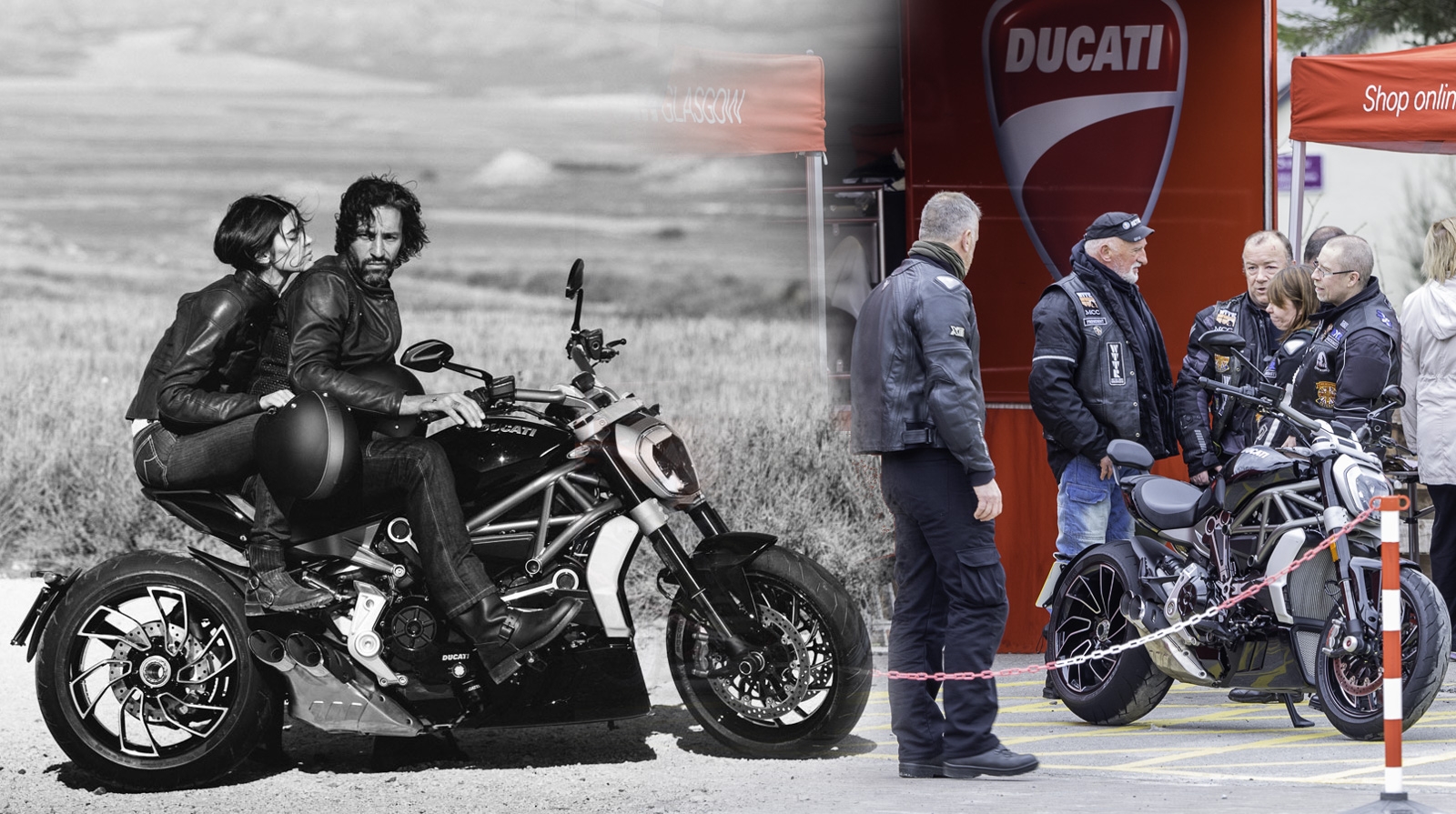
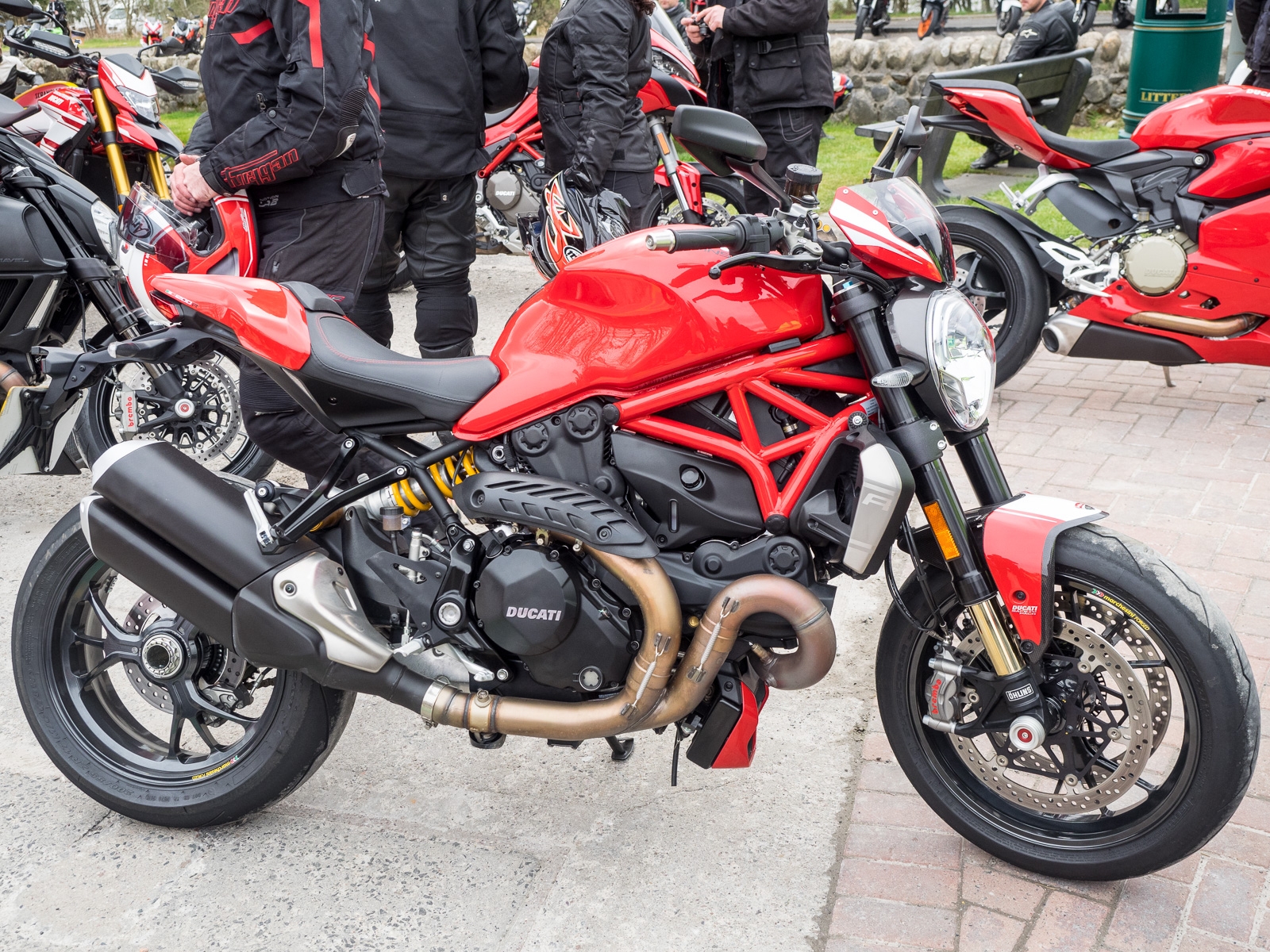
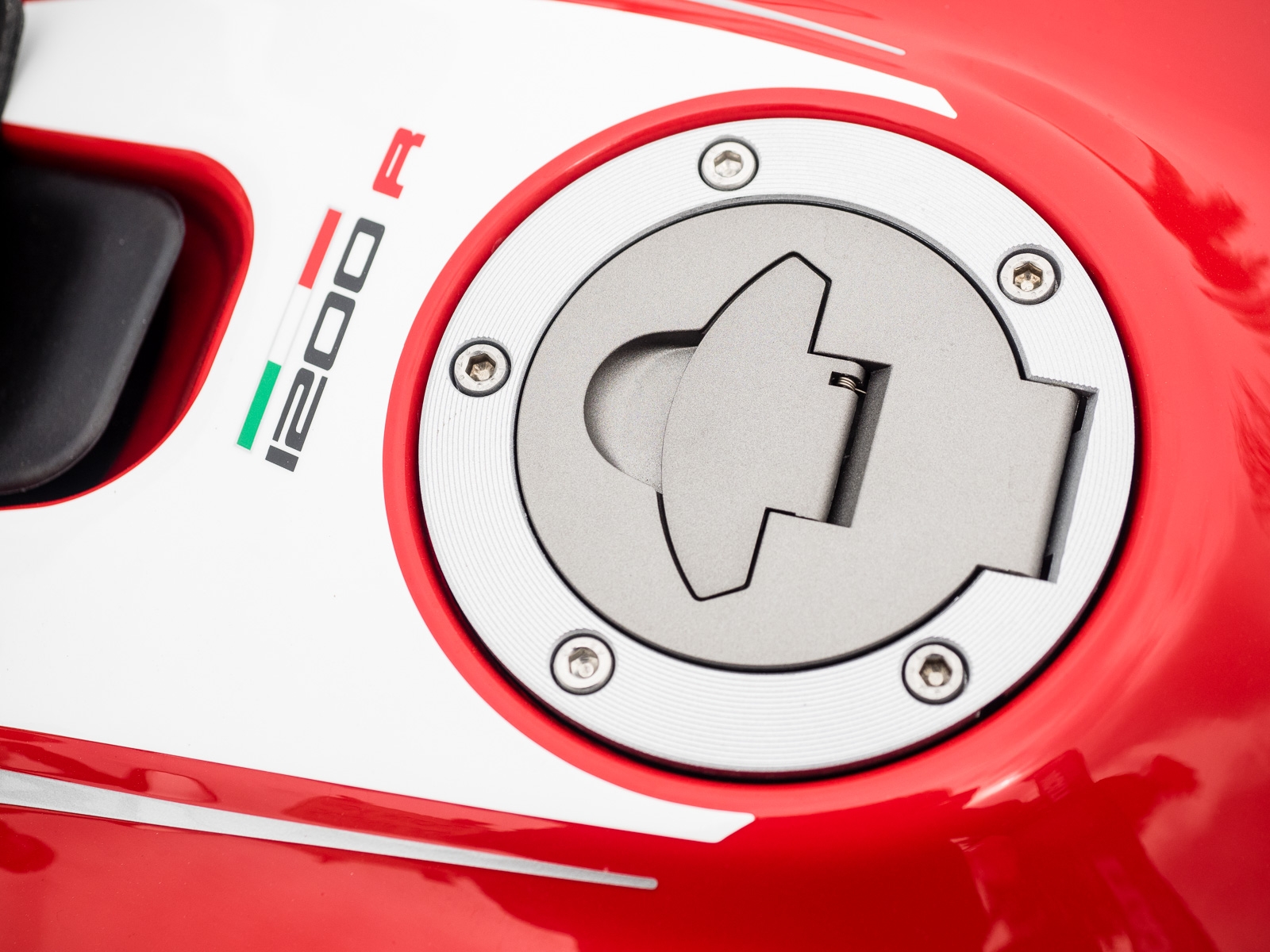
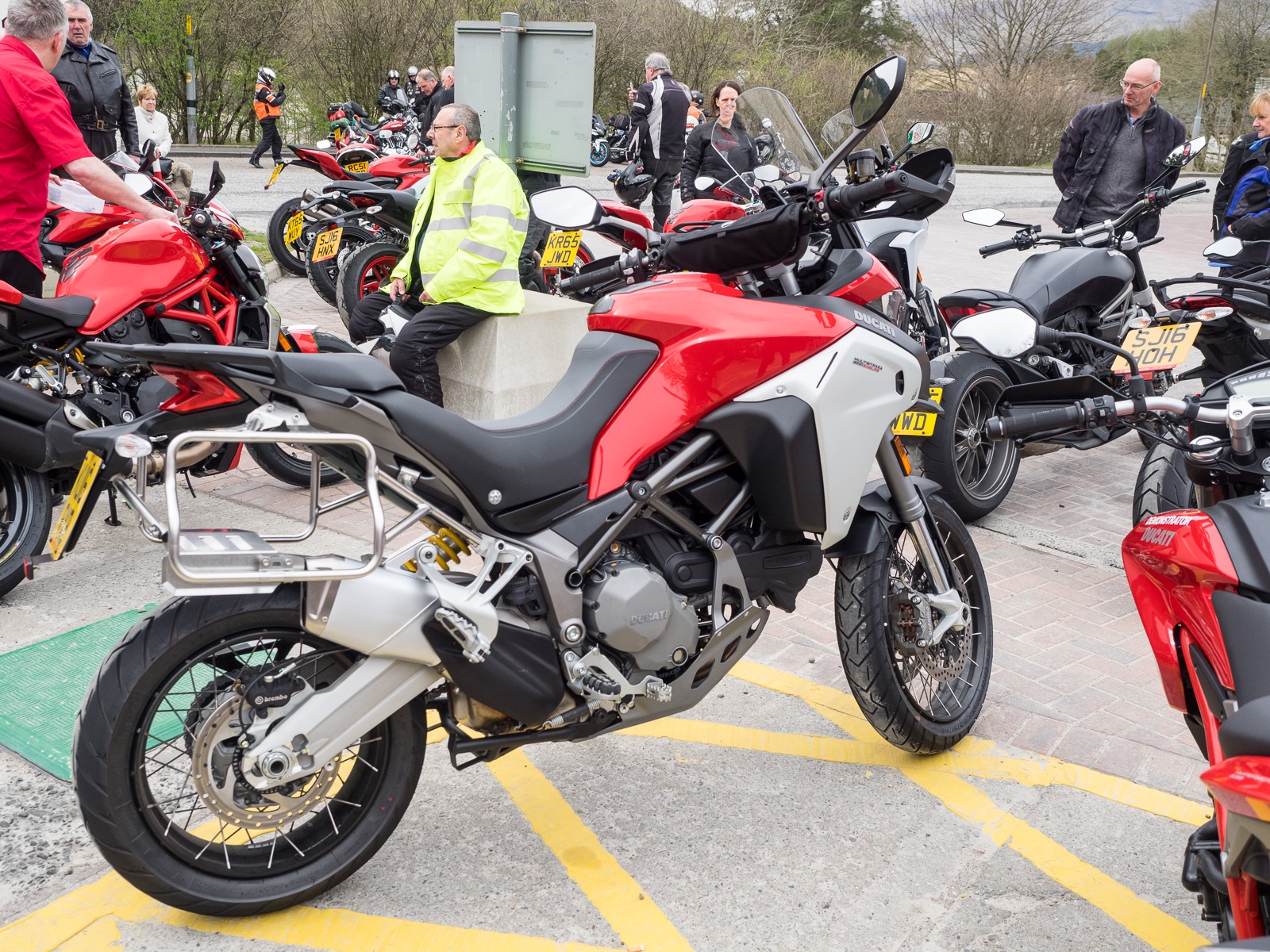
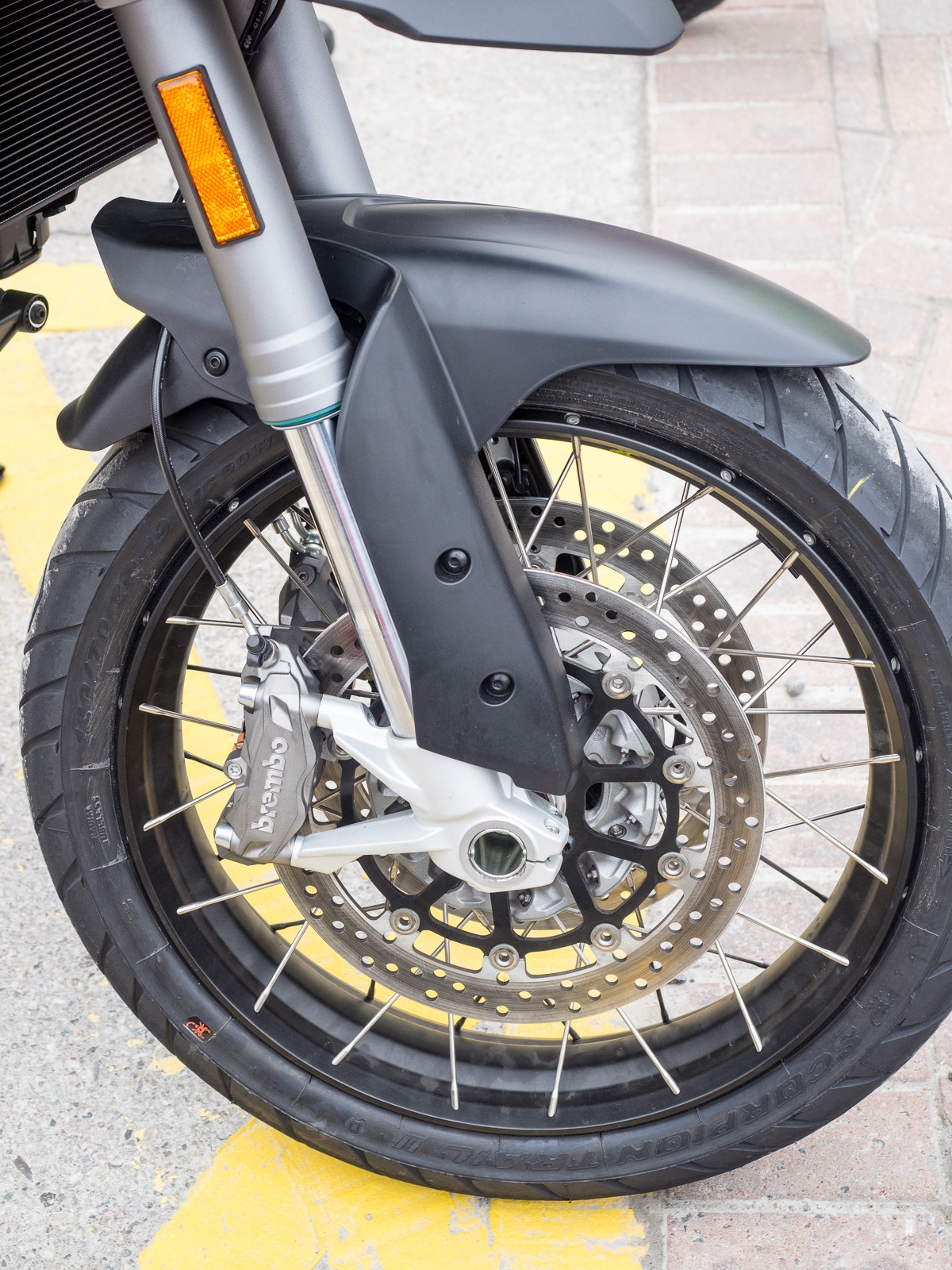


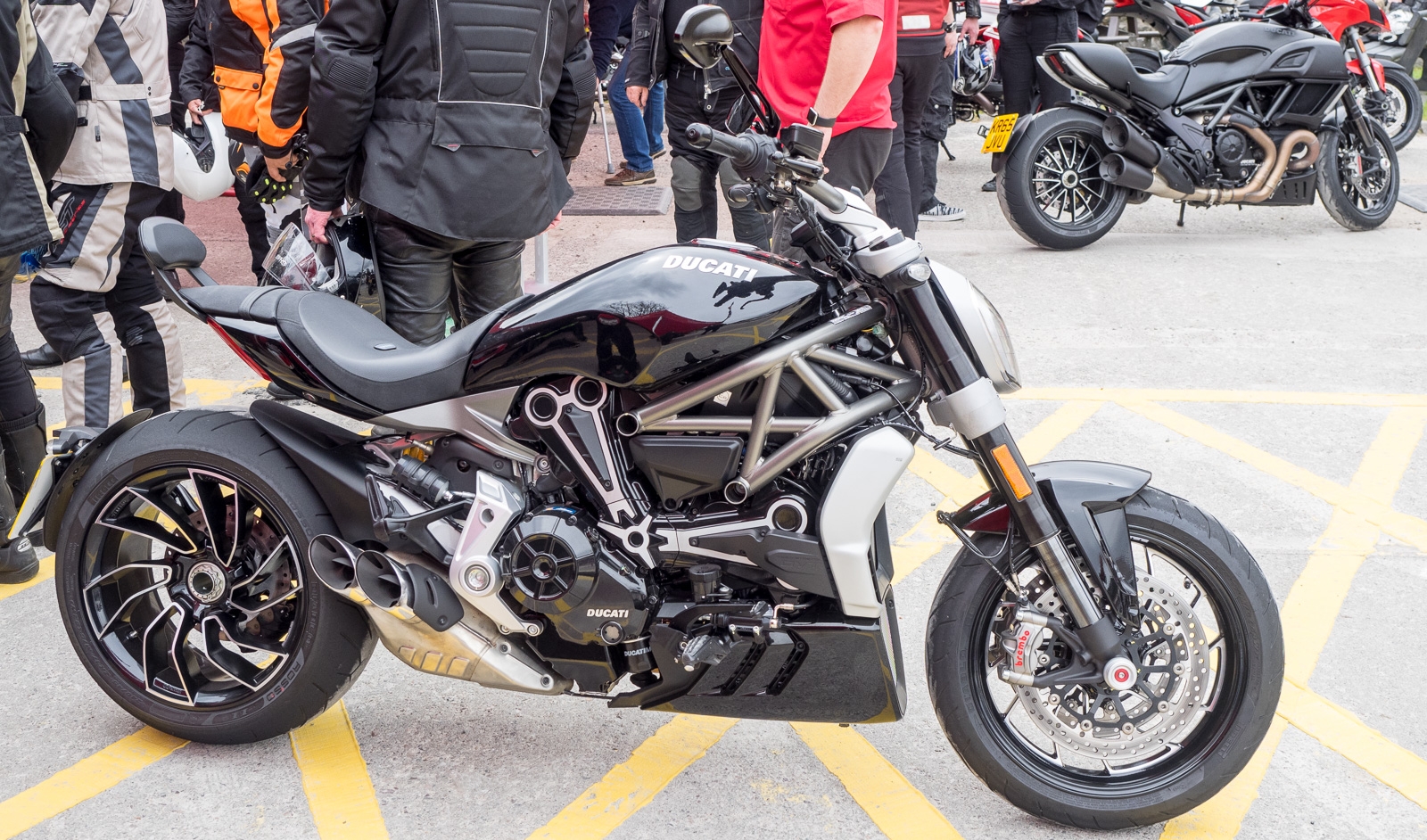
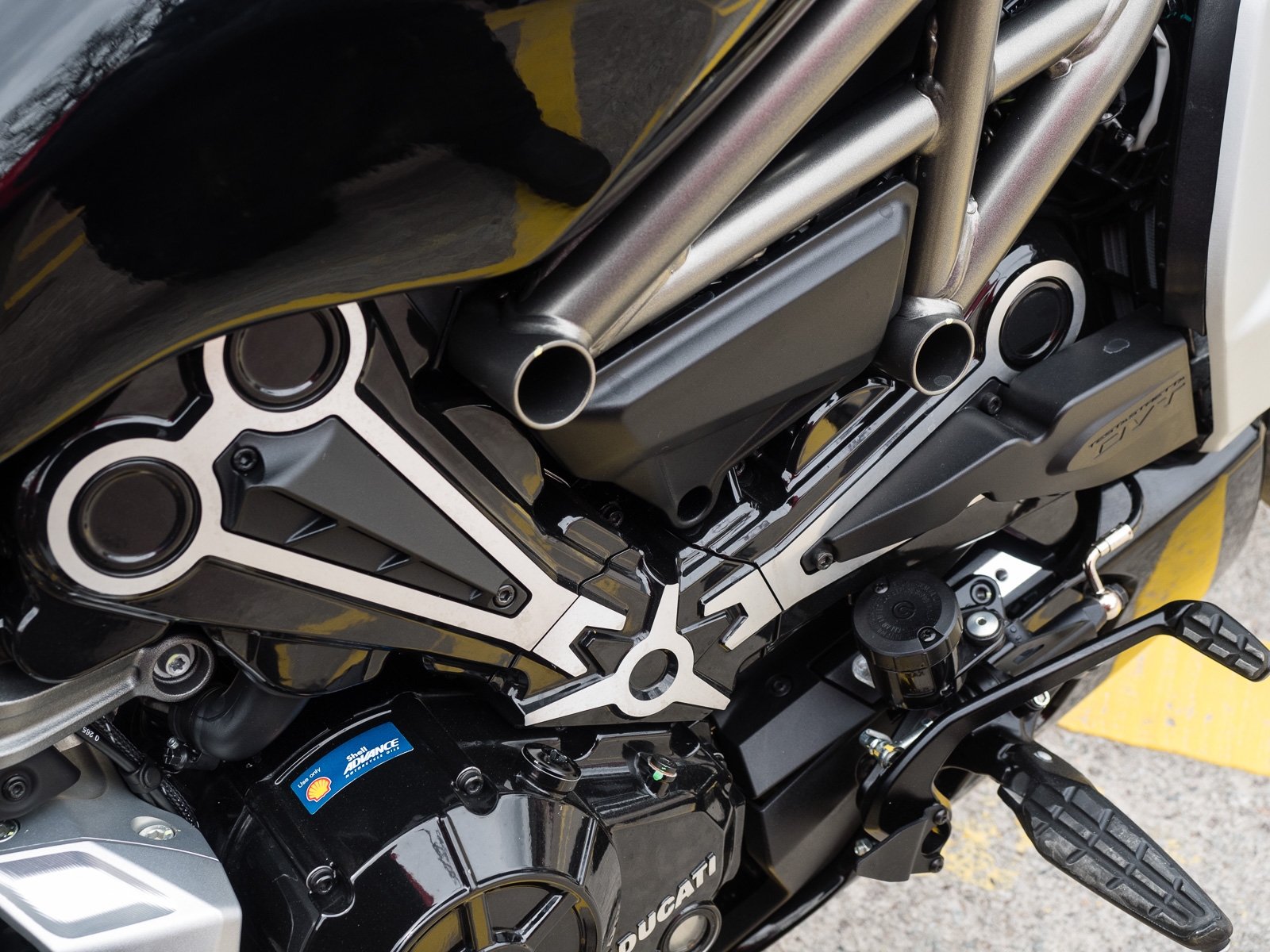
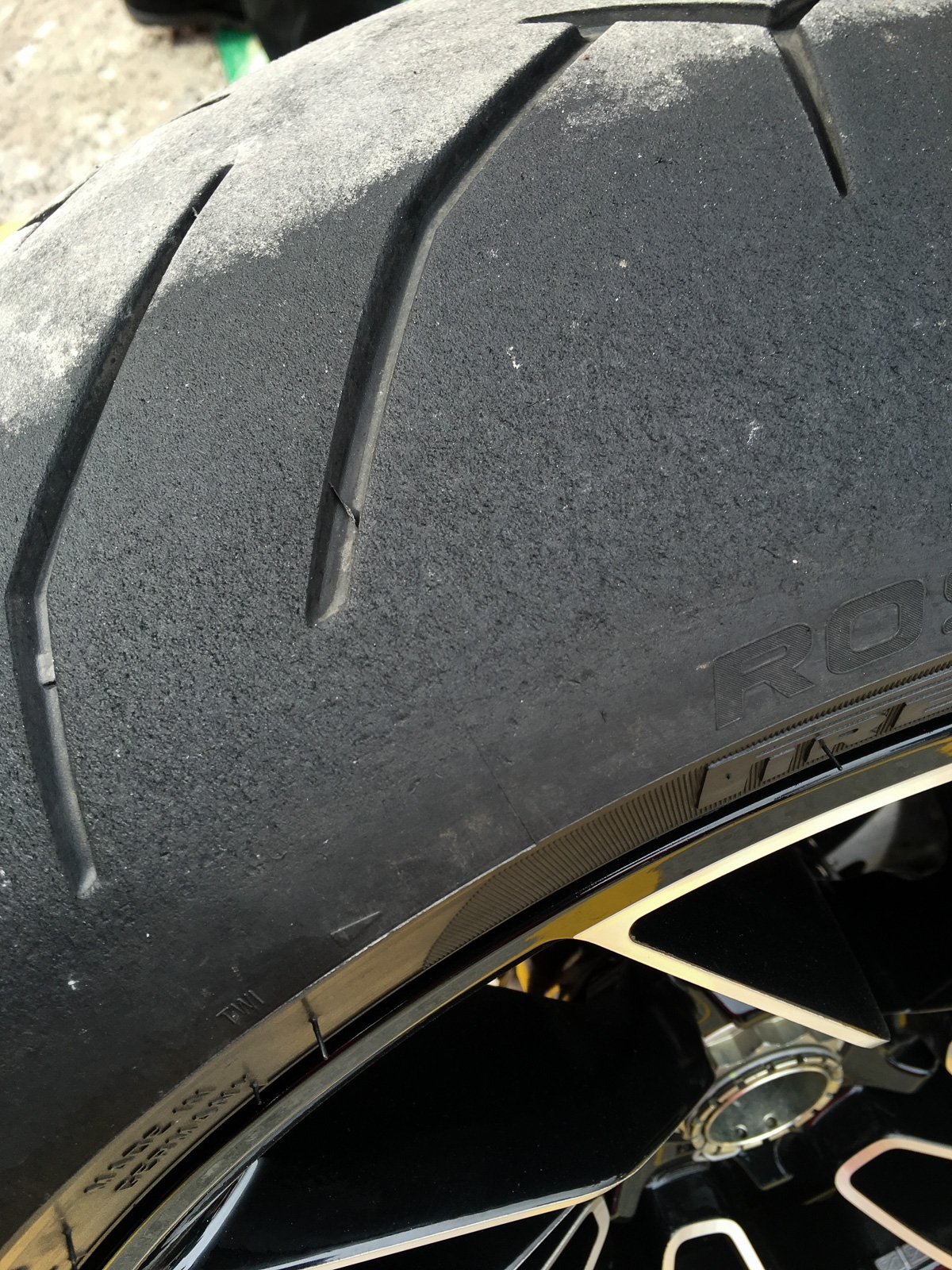
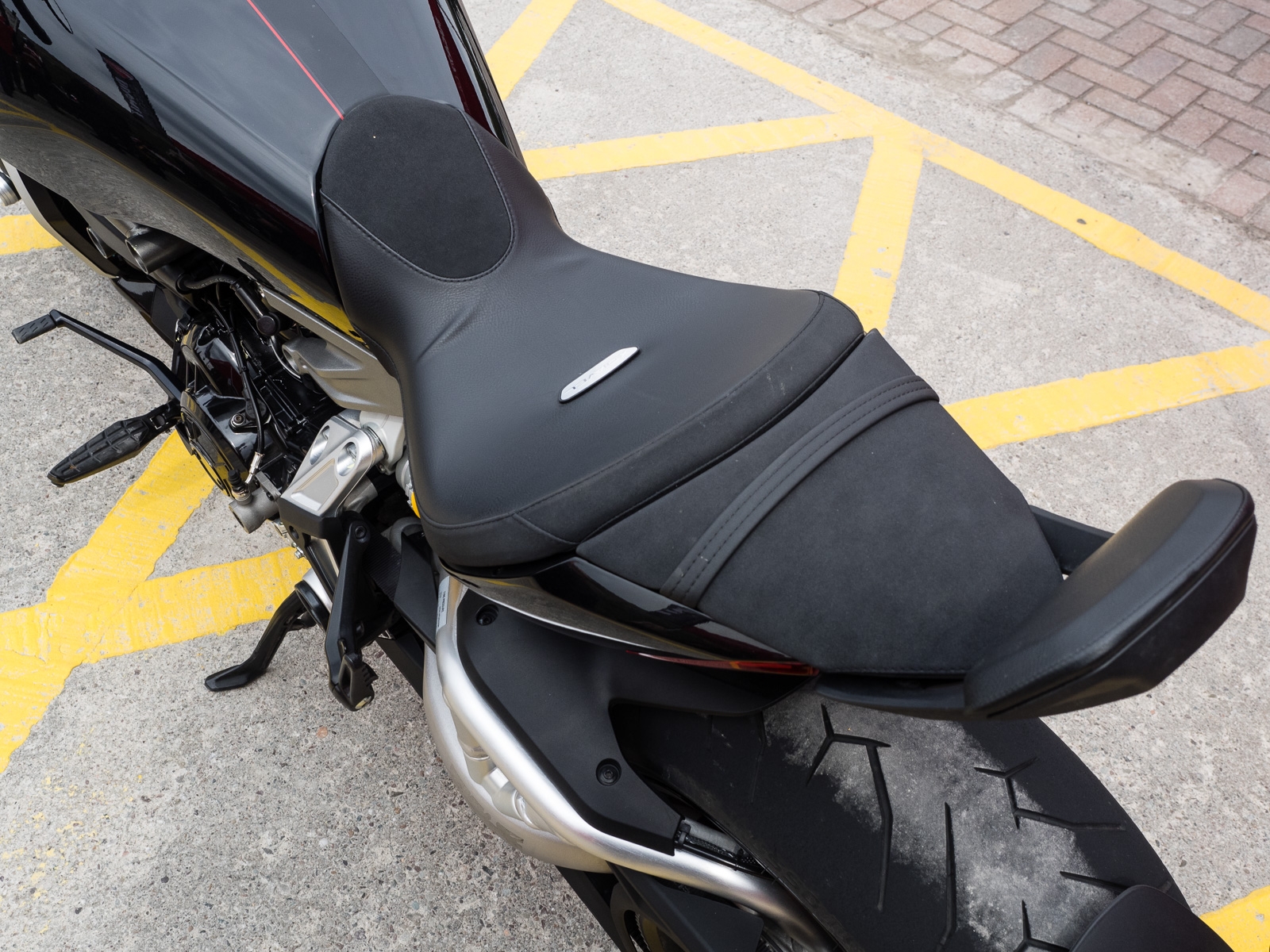
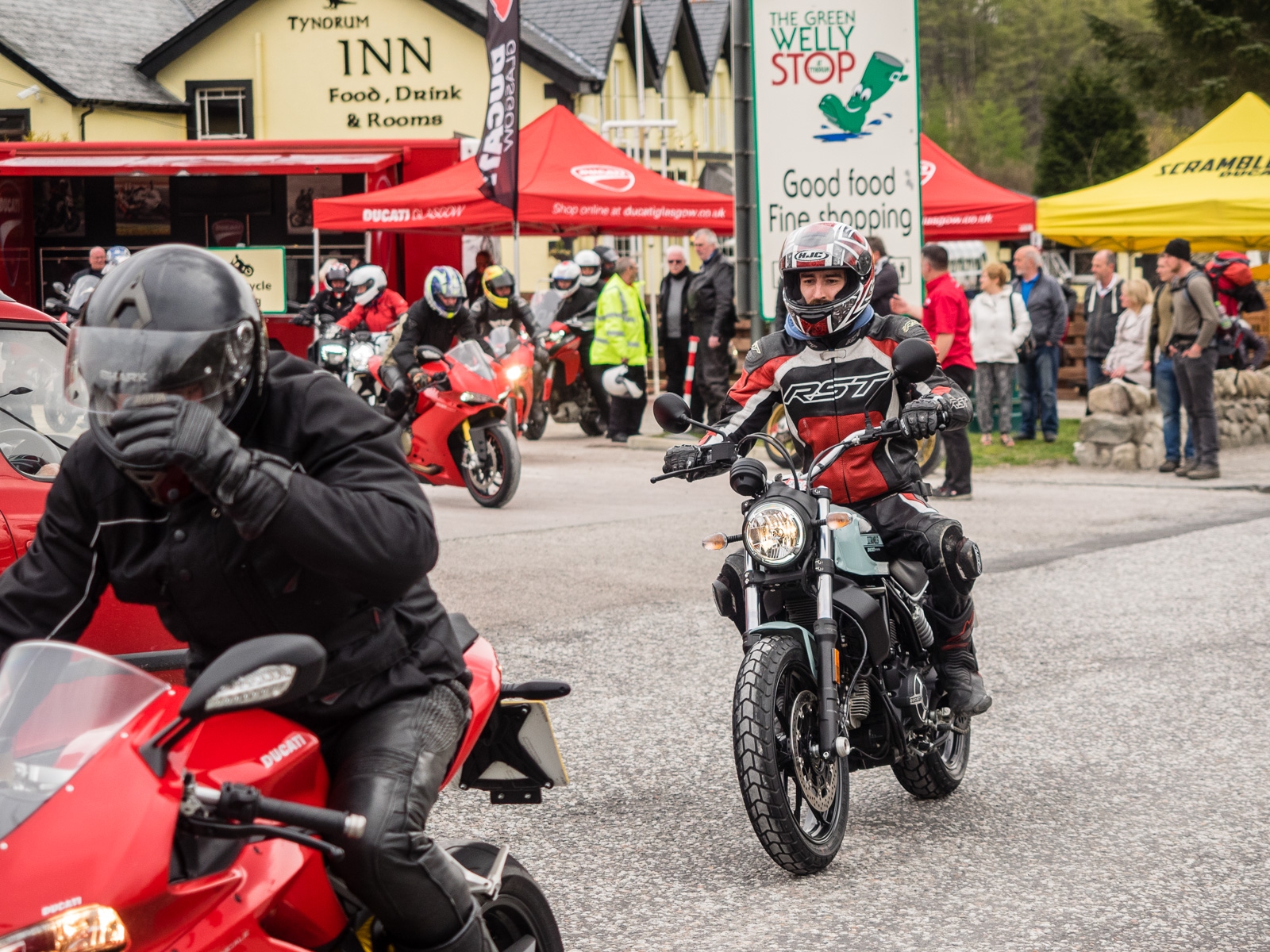
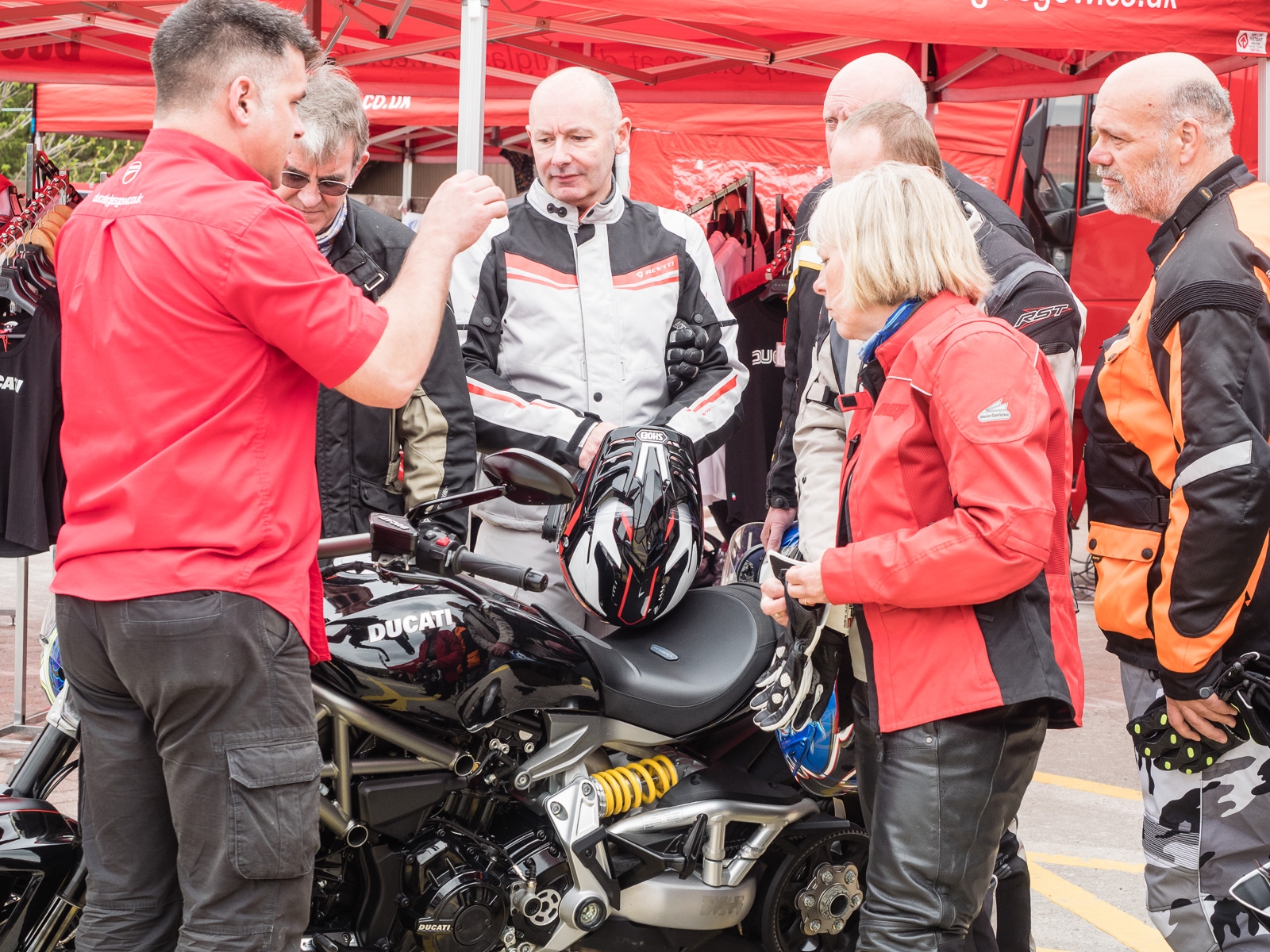
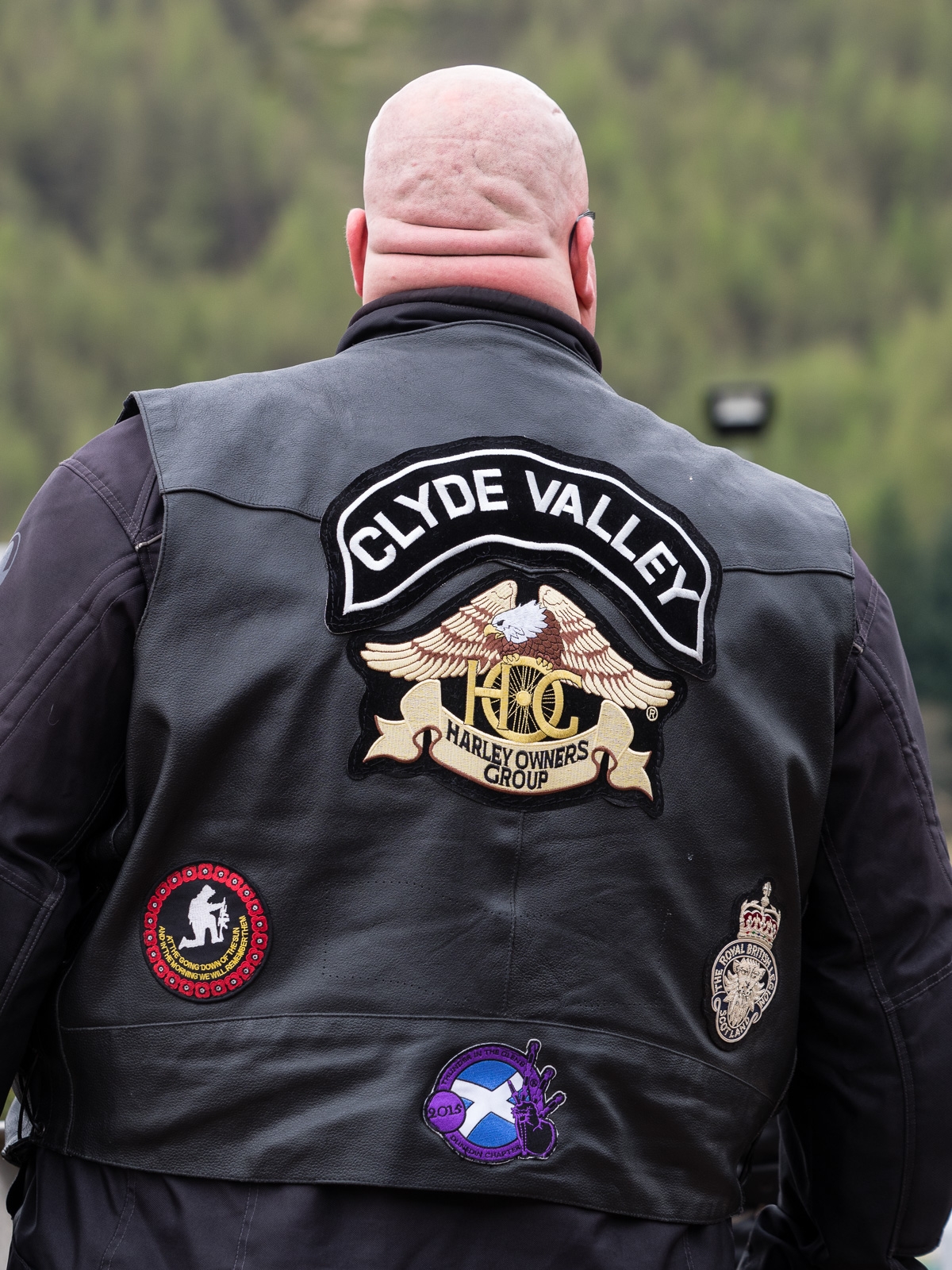

0 Comments
1 Pingback